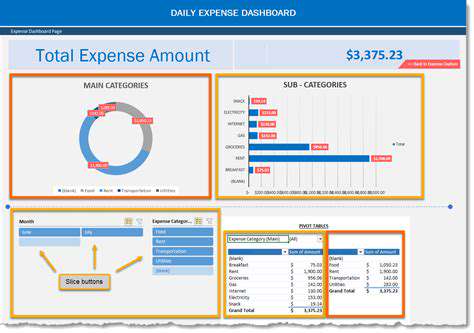Financial Burden of Missed Work
Migraine episodes often force individuals to miss work, creating a ripple effect on their finances. The cumulative loss of income can become overwhelming, especially for those with frequent or severe attacks. Beyond immediate paycheck reductions, this situation may hinder career growth as consistent absences could paint an employee as unreliable. Some find themselves dipping into savings or accruing debt to cover basic living expenses during these periods.
Secondary costs emerge too - like arranging last-minute childcare or missing income-generating opportunities. The professional reputation damage from repeated absences might block promotions or raises, compounding financial stress over time.
Healthcare Costs and Medications
Managing migraines typically requires multiple medical interventions. Doctor consultations, diagnostic procedures like MRIs, and prescription medications form just the baseline expenses. Chronic sufferers often face mounting bills, particularly when standard treatments prove ineffective. While over-the-counter options seem affordable initially, their frequent purchase for severe attacks adds up significantly.
Advanced treatments like Botox injections or nerve blocks present another financial hurdle. Despite their potential effectiveness, these procedures often come with hefty price tags. Insurance coverage varies widely, leaving many patients shouldering substantial out-of-pocket costs for essential care.
Reduced Productivity and Lost Earnings
Even when present at work, migraine sufferers frequently operate below peak capacity. Concentration lapses, slower task completion, and increased errors become common during attacks. This diminished output directly affects earning potential, as performance metrics typically dictate raises and bonuses. The cumulative effect of this productivity loss often exceeds the financial impact of outright absences.
Many employers underestimate how migraines impair work quality. This misunderstanding can lead to unfair performance evaluations, potentially stalling career progression and perpetuating financial instability for affected employees.
The Impact on Personal Expenses
Migraine management extends beyond medical bills to numerous lifestyle adjustments. Specialized pillows, ergonomic work setups, and alternative therapies all carry costs. Transportation to frequent medical appointments adds another expense layer. These often-overlooked expenditures can strain household budgets, particularly for chronic sufferers.
The condition's unpredictable nature also limits social participation. Missed events, canceled plans, and abandoned hobbies not only reduce life quality but may also represent lost networking or income opportunities, creating indirect financial consequences.
The Emotional and Mental Toll: Indirect Costs
Chronic pain inevitably affects mental health, with anxiety and depression commonly accompanying frequent migraines. This psychological burden impairs decision-making abilities, potentially leading to poor financial choices during painful episodes. The resulting stress can create a vicious cycle, as emotional distress may trigger more frequent attacks.
Social withdrawal often follows, diminishing support networks precisely when needed most. Without adequate emotional backing, sufferers may face additional expenses for counseling or therapy, further straining their finances.
Lost Productivity: A Silent Financial Drain
Understanding the Financial Impact
Migraine's disruption extends across all life domains, with work impacts being particularly financially damaging. The true cost encompasses both visible absences and invisible productivity losses. While missed days show clearly on timesheets, the hours spent working through pain at reduced capacity often go unaccounted for, yet equally affect earnings and career trajectories.
Missed Work and Reduced Productivity
Attack frequency directly correlates with professional setbacks. Employees might arrive late, leave early, or struggle through workdays in pain. This partial absenteeism frequently proves more costly than full absences, as employers pay full wages for diminished output. Performance metrics inevitably suffer, potentially affecting bonuses, promotions, and job security.
Healthcare Costs and Medication Expenses
Treatment expenses form a significant portion of the financial burden. From preventative medications to emergency treatments, the costs accumulate relentlessly. Specialist co-pays, therapeutic devices, and experimental treatments can drain savings rapidly, particularly for those with inadequate insurance coverage.
Impact on Personal Finances
The financial strain permeates all aspects of life. Some sufferers deplete emergency funds, delay major purchases, or sacrifice retirement contributions to manage migraine-related expenses. Long-term financial planning becomes exceptionally challenging when facing unpredictable medical costs and income fluctuations.
Lost Opportunities and Reduced Earnings Potential
Career trajectories often flatten for chronic sufferers. Missed networking events, declined business trips, and turned-down promotions accumulate over time. The resulting earnings gap compared to healthy peers can span tens of thousands annually, creating lifetime financial disadvantages.
Diminished Quality of Life and Increased Stress
The constant financial worry exacerbates the condition's emotional toll. Stress about medical bills and income loss can trigger more frequent attacks, creating a destructive feedback loop. This psychological burden often requires additional spending on mental health support, adding another expense layer.
Indirect Costs and Social Impact
The ripple effects extend through personal networks. Family members may take unpaid leave to provide care, or households might incur expenses for delivery services when cooking becomes impossible during attacks. These hidden costs, while smaller individually, accumulate into significant financial impacts over time.
